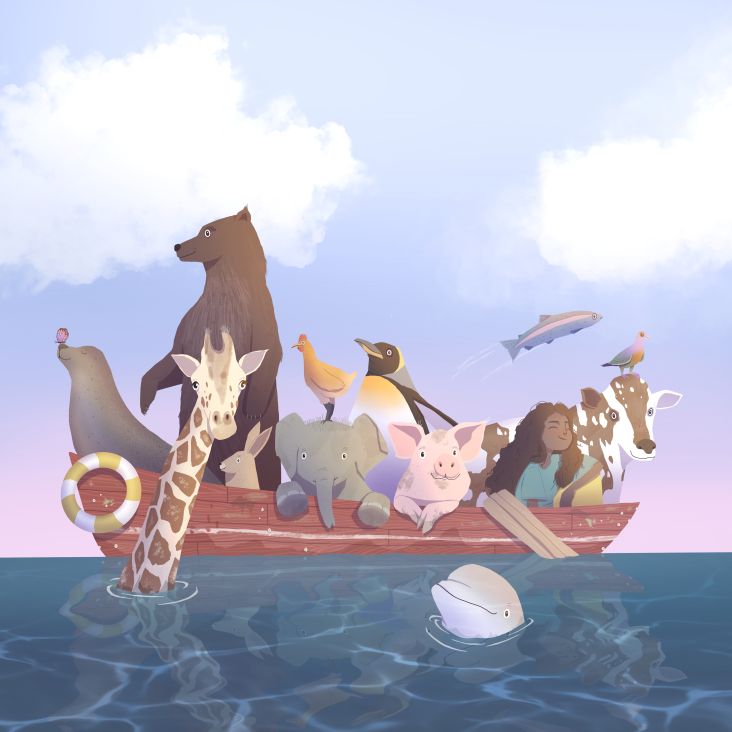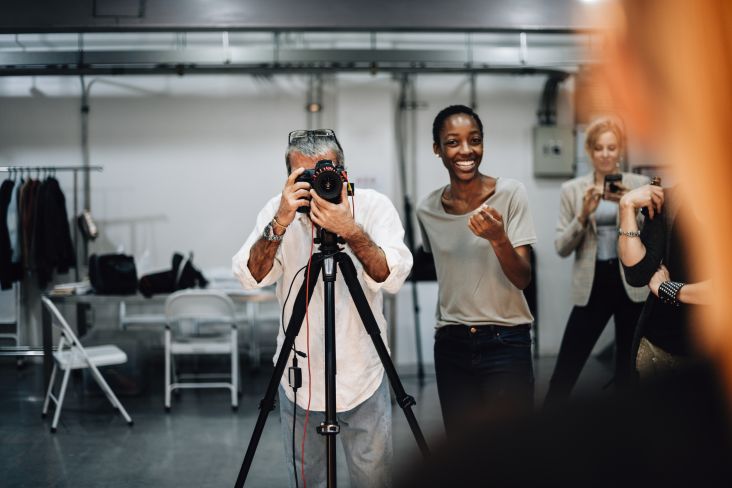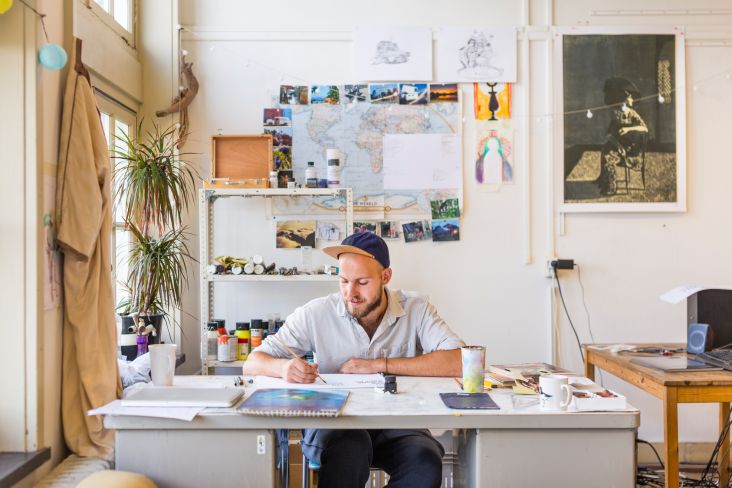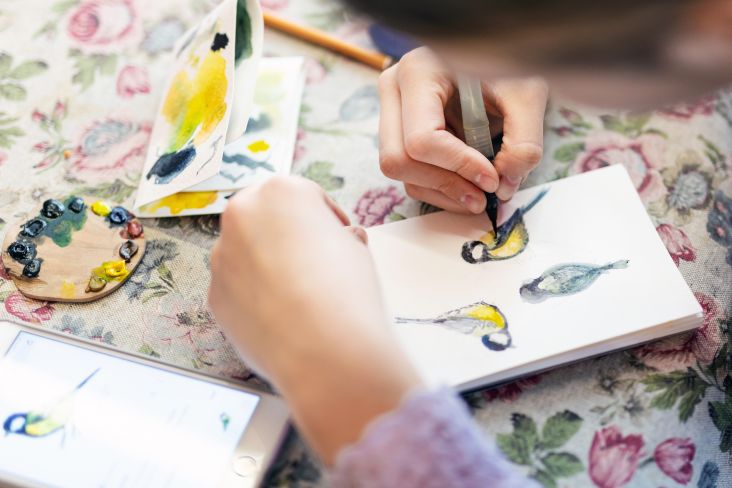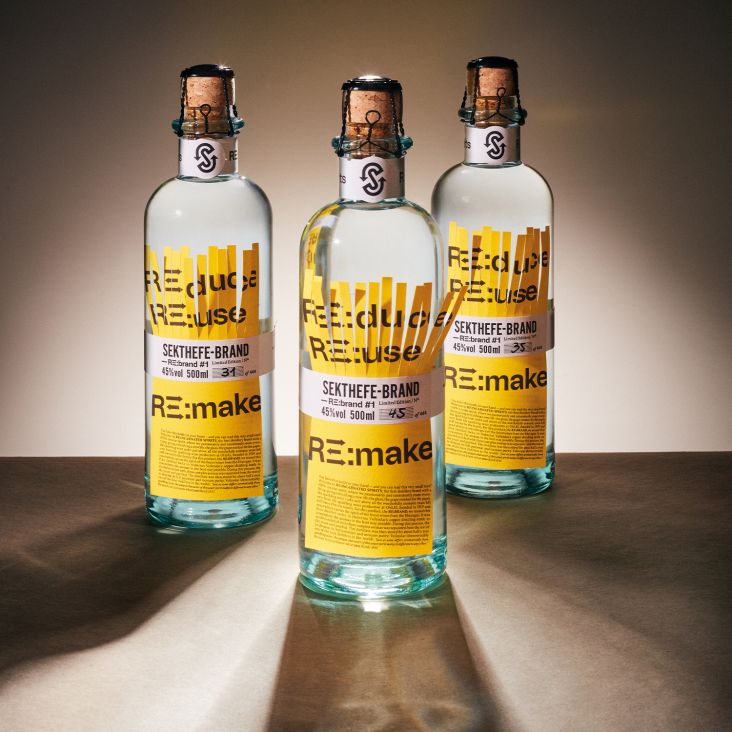Why clients often undervalue graphic design (and how to persuade them otherwise)
Many clients don't fully appreciate what graphic designers can offer them. Leading practitioners explain why and offer advice on the way forward.
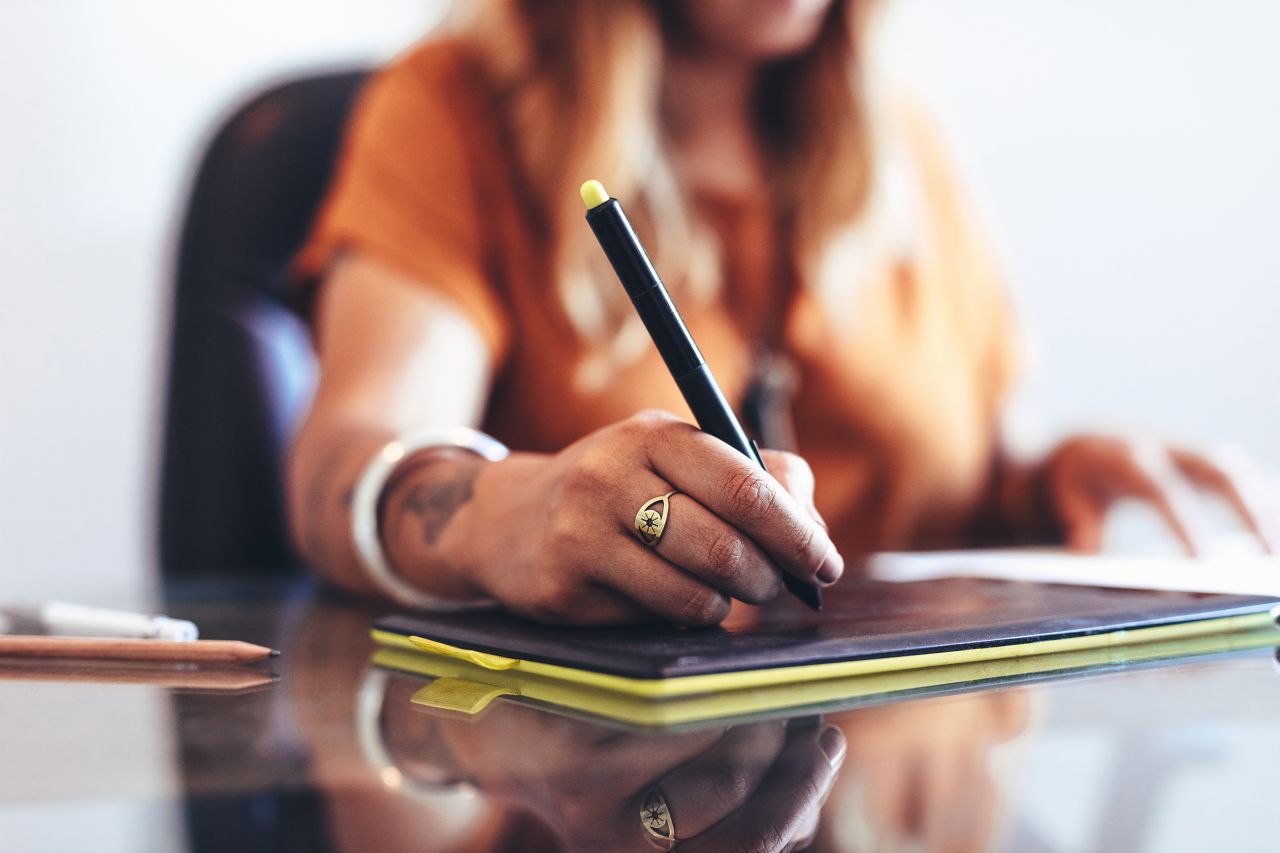
Image licensed via Adobe Stock
There are many good things about graphic design, including the potential to earn a decent salary, engage in hybrid or remote working, and do fulfilling, interesting work. But while those things are all important, there's something else that's often missing and eats away at the very heart of us: respect.
At the extreme, some clients look down their noses at you and think of you as a menial 'scribble monkey' who knows how to use Photoshop but little else. More broadly, many clients seem like nice people but don't really value graphic design or what it can contribute to their business.
So why is graphic design so often undervalued, and what can you do about it? We asked the Creative Boom community for suggestions and shared some of their best advice below.
1. They don't grasp what graphic design actually is
One of the main reasons non-designers undervalue graphic design is that they don't really know what it is. This is exacerbated by clickbait media reports expressing faux shock at how a company or public body spends millions on a logo.
Yet as freelance AD, motion artist, and video producer Heather Seidel Bosi points out. "There's more to a brand's identity than a logo. Colours, type, motion, shapes, and so on are huge visual identifiers! Not to mention how copy, photography, etc., factor into brand personality. Great design systems look easy, but there's lots of work behind them."
Angela Roche, designer and founder of Love & Logic, agrees. "I think we're all too often perceived as just 'image makers' or people who can make 'pretty pictures' – and some clients don't understand the thought process that goes into creating a creative piece of design or a brand identity," she says. "So it's our job to help educate our clients, to enable them to see the value we creatives provide."
Something else people often miss, adds product designer Brando Vasquez, is the importance of implementation. "Some clients, and even some designers, think that providing the 'final' files is the end goal," he explains. "In fact, the end goal is the proper migration from the old system to the new system."
Furthermore, many people may also think that graphic design is something it's not. As Greg Findley of Mantra points out: "There's often a misconception that a logo needs to communicate something about their business. I use examples of long-standing brands to show them its primary purpose is for identification and standing the test of time."
The first step to solving these common misunderstandings is to acknowledge they exist and empathise with clients struggling to admit their ignorance – even to themselves. There's no one-size-fits-all way to navigate this confusion, but diplomacy, tact and empathy are key; thankfully, all qualities that good designers need to develop anyway!
2. They don't understand the process
Even if clients understand what graphic design is, they often don't understand how graphic designers actually work, assuming it's a simple case of getting from A to B rather than the more collaborative and iterative process that good design demands.
"Clients often don't understand pretty much everything about the design process," says creative director Lee Davies. "Even how to write a proper brief. Giving away the process, how we do things – or what's required to get to the end – seems to help them understand a little bit. That's the hope anyway."
Angela Roche agrees and believes this needs to come right at the beginning of the client relationship. "Start by outlining your process so that clients can see where the 'thinky thinky' time happens, and articulate how this underpins the success of the whole project," she advises. "By taking them through the journey using a past project to demonstrate, they'll see what it takes to get to the final result and understand the value of the process."
"For me, it's persuading clients that time spent in research and the creative direction is time well spent," says graphic designer Sarah Fisher. "We can 'quickly come up with a few logo ideas'... but only if we understand their company, market fit and future goals, and have some sort of creative direction in place first."
Crucially, clients need to understand that they can't just hire a designer and then walk away; they must be part of the process themselves. "The designer needs to visually translate the vision of what the client wants to achieve," explains graphic designer Kieron Lewis. That means stressing "the importance of thorough feedback, so the designer can articulate a meaningful deliverable. Having transparent communication throughout the process is an essential way to ensure both parties are on the same page."
3. They don't appreciate how much it boosts their business
So you've helped your client understand what graphic design is and how graphic designers work. But that's not yet the end of the story.
"There are clients who struggle with the idea that design, distilled through a visual identity, can have a profoundly transformative power over their business," says Cat How, co-founder of How & How. "They think their product is what sells their business — which is true to a certain extent — but perhaps undervalue, at first, that design can actually move their company's brand from merely being an indicator of quality, innovation or value; to instead being a vessel of meaning and values.
"Those clients that are open to change and open to the transformative power of design are always the ones that seem to get the most out of the process," she adds. "But with those that aren't, we always find ways of still making them see the importance of our work through validation via other client testimonials, referrals or relevant ROIs."
Angela Roche has a similar take. "Highlight the impact of your work," she recommends. "If possible, use hard data such as statistics, figures, and return on investment (ROI) to demonstrate the impact of your previous work. It's not always possible for us creatives to do this, but if you can, it will help clients see the tangible value of investing in creative services."
The value of design and creativity goes beyond commodity, time or pure deliverables. The power design has to shape, lift and add immense business value is often overlooked.
4. They don't realise how long it takes
One of the biggest misconceptions from clients about graphic design is how long it takes, says Cat. "It's sometimes difficult to communicate the amount of time needed for more in-depth feedback rounds, logo refinement or – in the case of the large websites we produce – asset creation for a vast number of pages. We mitigate this by ensuring our planning is incredibly thorough, and our delivery stages have enough flex to deal with the odd extra round of client amends, last-minute changes or stakeholder management."
Dani Molyneux of Dotto tells a similar story. "Time-related issues are always a challenge to communicate," she says. "Clients underestimate how long work takes. They'll expect a quick turnaround from designers but give slow feedback or supply late content, potentially messing up the schedule, but expecting the same deadline."
So what's the answer? "It's tricky, but like with everything, being open, clear and consistent helps," she says. "Basically, keep communicating. For me, adding 'what to expect', 'what happens next' and 'what's needed and when' elements into every stage of presentation has helped."
Tony Clarkson, designer and founder of &Something, makes the point that not all time spent is necessarily 'productive' in the way clients may think. "It feels like the most undervalued bit is the time spent stripping away the things which don't work," he explains.
And that presents a conundrum. "From the designers' point of view, if a design is simple and delivers, it's a success. Yet from a client's point of view, a simple design mustn't have taken long." So what does he do to bring them around? "I think it's to lead them through some of the processes and stages the design went through," he says. "Show some tryouts and explain what and why things did or didn't work, and get them feeling involved; point out a few things they might have said at the start that helped me out. Show more than just the final result. That way, a client will more likely get what you do and why it has value."
5. They view it through a data-focused lens
As we've stated already, it's useful if designers can provide fact-based evidence that their work can boost a business's ROI. But that doesn't mean that design's contribution can only be measured in terms of raw data.
As illustrator Aelfleda points out: "The client doesn't understand that a lot of what we do creates a subconscious and associative reaction in the viewer. And that an emotional connection to a piece of work is more important than that the viewer immediately understands the 'why' behind every design choice."
Simon Dixon, co-founder of DixonBaxi, agrees, noting that: "The value of design and creativity goes beyond commodity, time or pure deliverables. The power design has to shape, lift and add immense business value is often overlooked as it is bought as assets or just day rates. The value of great design is far higher and longer lasting, so a discussion is sometimes needed to help educate them on the design process and its value."
One personal bugbear of Simon's is a lack of focus on language and voice: the actual message and content the design is delivering. "If this isn't on point, the design's value is wasted or less effective," he argues. Another common niggle is when clients are led by subjective opinions about the look or feel of work and not enough on what works for the people it's designed for. "If they don't value people's attitudes, behaviours and emotional shifts and lean too heavily on demographics and data, it has a terrible incremental rounding on design and can create a sea of similar-looking work or brands," he believes
So how can this be countered? "An overall theme we try to help with is an appetite for calculated risk to make the greater change," says Simon. "In a rapidly shifting world, inaction is one of the most significant risks to brands. They'll be outrun by change, and it can be a scary place to make enough of a leap to counteract this.
"In each case, honest, open conversations early in the process help. Discussing the value of the approach and often showing how it's worked in other projects. Discussing the long-term benefits of a well-designed brand, such as increased recognition and loyalty. We also tend to create a safe, democratic and calm space in presentations and workshops to help people relax into change and see the value of why you'd put the effort in these areas."
6. They think it's about things rather than ideas
A final misunderstanding about graphic design, says Stuart Watson of Nomad Studio, is that some clients don't realise how much it is about ideas.
"Graphic design, like plumbing, is priced on time and materials," he says. "Ideas on the other hand, are exponential. It's easy to work out how long it takes to price up a logo or a poster. An idea is harder to charge for - who knows when a good one might hit us? - but infinitely more valuable.
"Ideas allow us to shift a client relationship from supplier to partner," he continues. "A supplier, by nature, is one of many, interchangeable and procured on value for money, not value-add. A partner is one of a select few, in it for the long run who adds meaningful value over time. A partner is harder to replace.
"That's why we build long term relationships with all our clients. It's a privilege. It makes the work better. It means everyone is invested. It also means you're there to fully develop the brand, ironing out any creases, course correcting, and iterating daily, rather than shipping a set of guidelines and saying 'best of luck' before moving on to the next project.
"So, if you want clients to value you, be valuable to them," he concludes. "Don't deal on time and materials, instead build lasting relationships that make you irreplaceable."




 by Tüpokompanii](https://www.creativeboom.com/upload/articles/58/58684538770fb5b428dc1882f7a732f153500153_732.jpg)

 using <a href="https://www.ohnotype.co/fonts/obviously" target="_blank">Obviously</a> by Oh No Type Co., Art Director, Brand & Creative—Spotify](https://www.creativeboom.com/upload/articles/6e/6ed31eddc26fa563f213fc76d6993dab9231ffe4_732.jpg)










